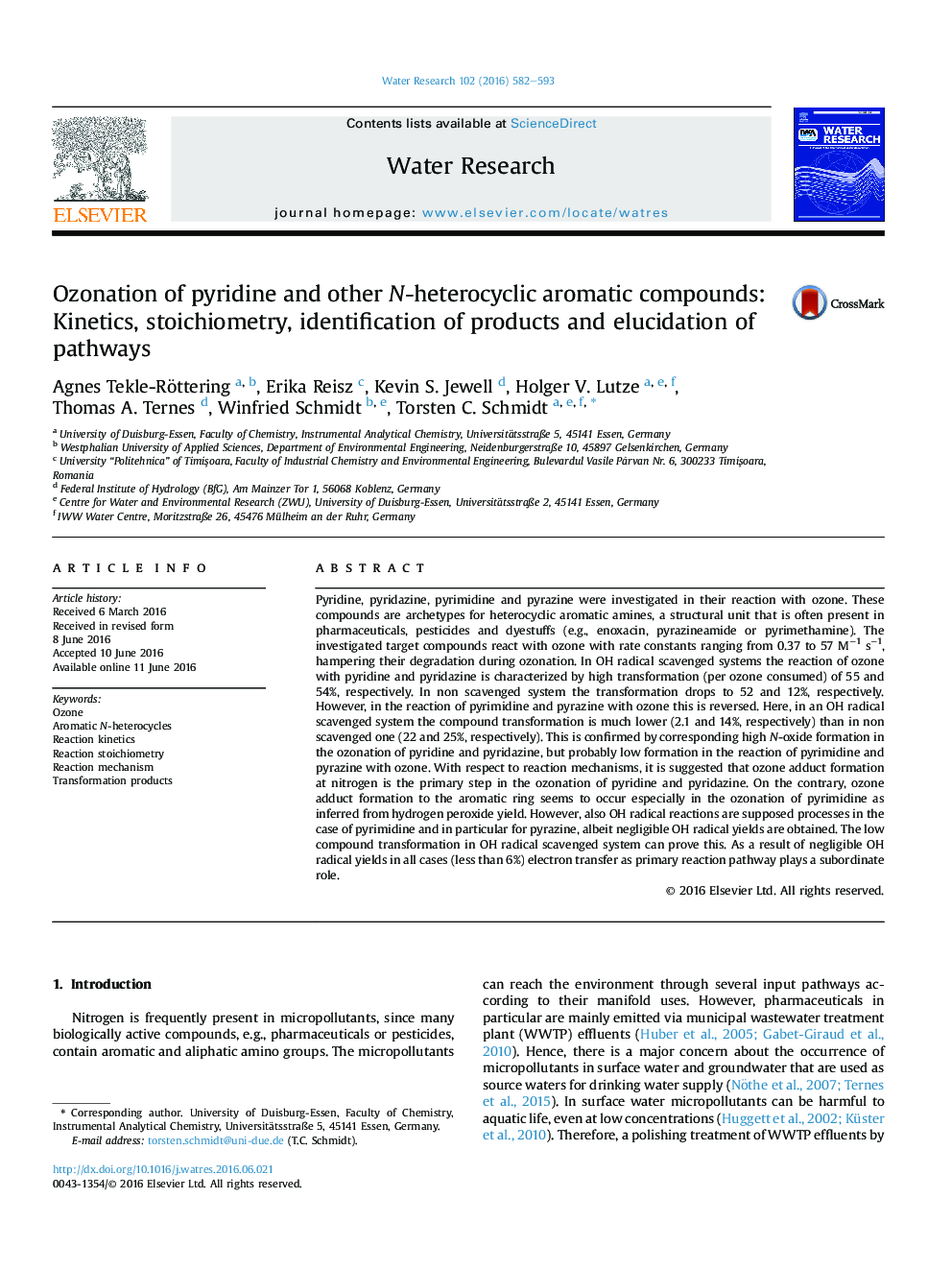| Article ID | Journal | Published Year | Pages | File Type |
|---|---|---|---|---|
| 4480889 | Water Research | 2016 | 12 Pages |
•N-Heterocycles react slowly with ozone.•Pyridine and Pyridazine react with ozone mainly via addition by forming N-oxides.•Pyrimidine and Pyrazine react in particular with OH radicals.
Pyridine, pyridazine, pyrimidine and pyrazine were investigated in their reaction with ozone. These compounds are archetypes for heterocyclic aromatic amines, a structural unit that is often present in pharmaceuticals, pesticides and dyestuffs (e.g., enoxacin, pyrazineamide or pyrimethamine). The investigated target compounds react with ozone with rate constants ranging from 0.37 to 57 M−1 s−1, hampering their degradation during ozonation. In OH radical scavenged systems the reaction of ozone with pyridine and pyridazine is characterized by high transformation (per ozone consumed) of 55 and 54%, respectively. In non scavenged system the transformation drops to 52 and 12%, respectively. However, in the reaction of pyrimidine and pyrazine with ozone this is reversed. Here, in an OH radical scavenged system the compound transformation is much lower (2.1 and 14%, respectively) than in non scavenged one (22 and 25%, respectively). This is confirmed by corresponding high N-oxide formation in the ozonation of pyridine and pyridazine, but probably low formation in the reaction of pyrimidine and pyrazine with ozone. With respect to reaction mechanisms, it is suggested that ozone adduct formation at nitrogen is the primary step in the ozonation of pyridine and pyridazine. On the contrary, ozone adduct formation to the aromatic ring seems to occur especially in the ozonation of pyrimidine as inferred from hydrogen peroxide yield. However, also OH radical reactions are supposed processes in the case of pyrimidine and in particular for pyrazine, albeit negligible OH radical yields are obtained. The low compound transformation in OH radical scavenged system can prove this. As a result of negligible OH radical yields in all cases (less than 6%) electron transfer as primary reaction pathway plays a subordinate role.
Graphical abstractFigure optionsDownload full-size imageDownload high-quality image (136 K)Download as PowerPoint slide
